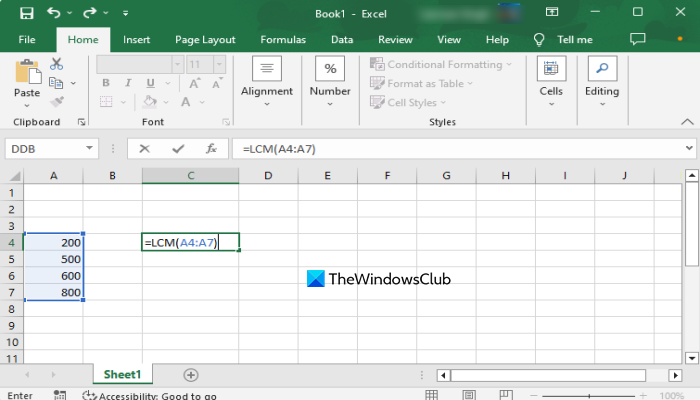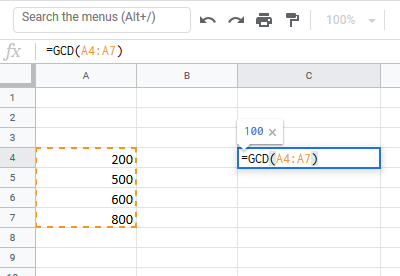If you wish to find the Lowest Common Multiple (LCM) or Greatest Common Divisor (GCD) in Excel, this post will be helpful. Microsoft Excel is known to help in easing mathematical calculations. We all know of tools for simple mathematical formulas like addition, subtraction, etc. However, as we move to more complex mathematical functions, we would need to use formulae to process the function on Excel.
What is the LCM and GCD in Excel?
The LCM function in MS Excel helps to generate the least common multiple (smallest multiple) of integers. That smallest multiple is exactly divisible by each number. The LCM syntax in Excel is written as LCM(number1, [number2], [number3],…). And, the GCD function helps to generate the greatest common divisor of two or more integers. In simple, it’s the highest common factor or integer that can divide integers present in a set. The GCD syntax in Excel is written as GCD(number1, [number2], [number3],…).
Find the Lowest Common Multiple or Greatest Common Divisor in Excel
One such case is while trying to find the lowest common denominator or greatest common factor in Excel. If you wish to find the lowest common multiple or greatest common divisor in Excel, check the following procedures:
- Find the Lowest Common Multiple (LCM) of a range of numbers
- Find the Greatest Common Divisor (GCD) of a range of numbers.
1] Find the Lowest Common Multiple of a range of numbers in Excel

Lowest Common Multiple: The Lowest Common Multiple or LCM of a bunch of numbers is the smallest common multiple of those integers. This means all those numbers would be divisible by the LCM while giving an integer value. LCM is useful for calculating problems related to gears and planetary alignment.
If you wish to find the lowest common multiple of a bunch of numbers in Excel, place those numbers sequentially in the same column. In that case, the syntax for the lowest common denominator formula would be as follows:
=LCM(<first cell with number>:<last cell with number>)
Eg. Let us say we place the four numbers for which we need to calculate the lowest common denominator from cell A4 to cell A7. Then the formula to calculate the lowest common denominator would become as follows:
=LCM(A4:A7)
Alternatively, you can also write the formula as:
=LCM(A4, A5, A6, A7)
If you want, you can also directly write the integers present in the cells of a column to find the LCM. So, let’s say you have 10, 20, 30, and 40 integers in A4, A5, A6, and A7 cells, then you can enter the formula as:
=LCM(10, 20, 30, 40)
In the example mentioned (as observed in the screenshot), we place the formula in cell C4 and Enter to get the result.
2] Find the greatest common divisor of a range of numbers in Excel
Greatest Common Divisor: The Greatest Common Divisor or GCD is the highest integer number that could be used to divide the bunch of numbers in question and give and an integer value.
Should you need to find the lowest common denominator of a bunch of numbers in Excel, place those numbers sequentially in the same column. In such a case, the syntax for the lowest common denominator formula would be as follows:
=GCD(<first cell with number>:<last cell with number>)
Eg. Let us say we place the four numbers for which we need to calculate the lowest common denominator from cell A4 to cell A7. Then the formula to calculate the lowest common denominator would become as follows:
=GCD(A4:A7)
We will place the formula in cell C4 and Enter to get the result and shown in the screenshot.

Even if you miss cells in a column, the formula would work as far as the first cell and the last cell are correct. It is important for all the values to be in the same column.
What is the LCM of 5 7 35 in Excel?
To find the LCM of 5, 7, and 35 in Microsoft Excel, open a workbook. Click on a cell and write the required formula which is =LCM(5, 7, 35), and press the Enter key. It will display the result in the same cell.
Hope you can get it working.